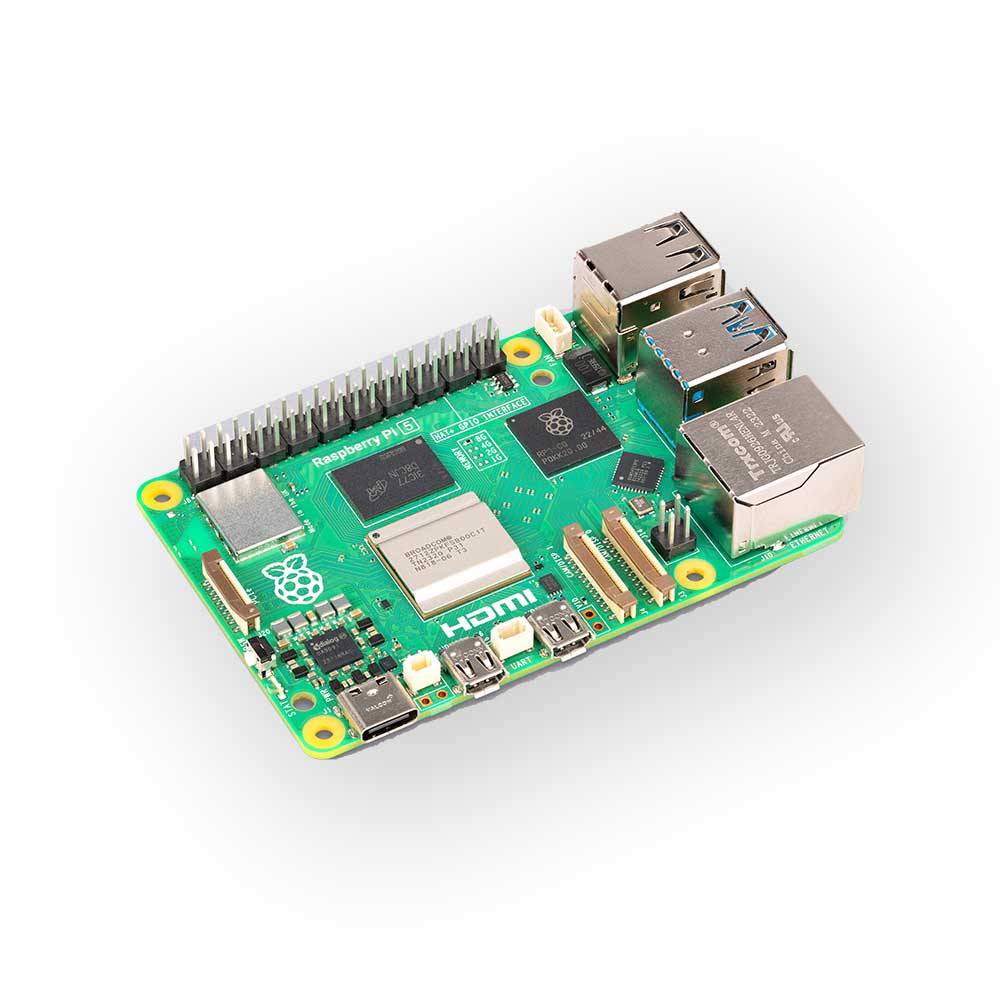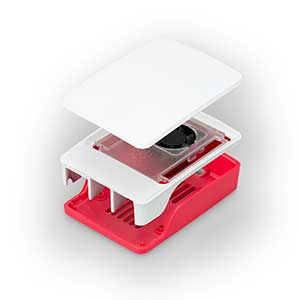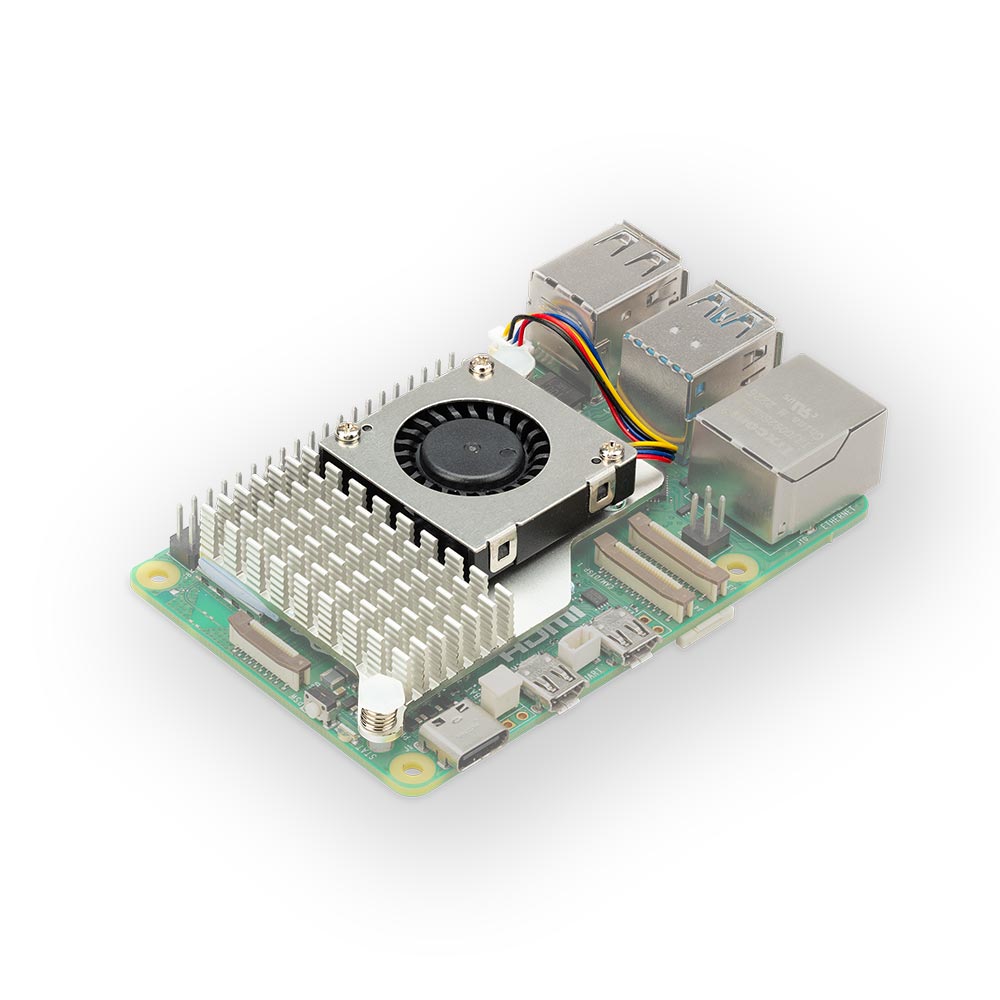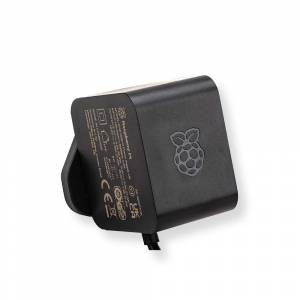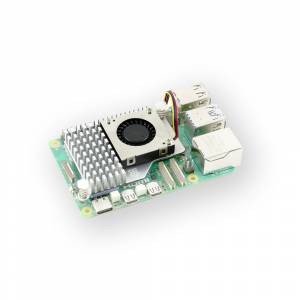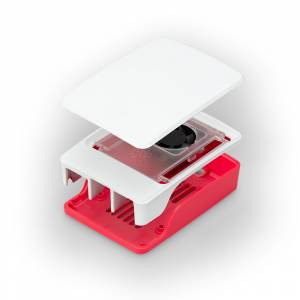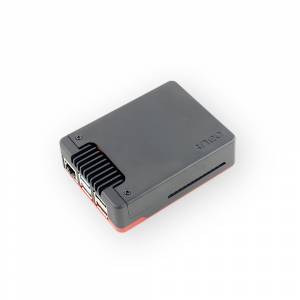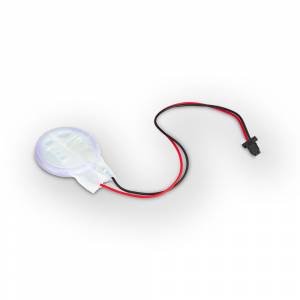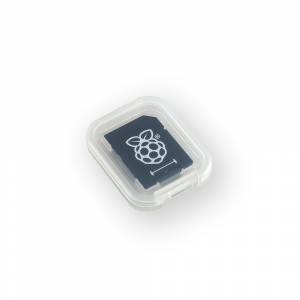Raspberry Pi 5 - 2Gb Version
Latest generation of the Raspberry Pi
2 to 3 times more powerful than the Pi 4
Significantly improved performance on screen, camera and USB interface.
Integrated RTC - Power button




Raspberry Pi 5 - 2G


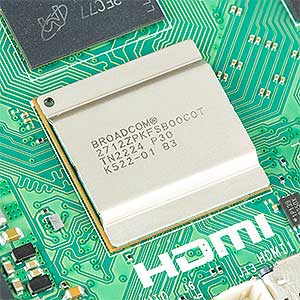

2 to 3 times higher performance
Featuring a 64-bit, quad-core Arm Cortex-A76 processor running at 2.4 GHz, the Raspberry Pi 5 represents a significant advance over its predecessor, the Raspberry Pi 4.
Indeed, this new iteration offers an impressive increase in processor performance, in the range of 2 to 3 times that of the Raspberry Pi 4.
In addition to improved graphics performance thanks to a VideoCore VII GPU clocked at 800 MHz, dual 4Kp60 display output over micro HDMI and state-of-the-art camera support thanks to a re-architected Raspberry Pi image signal processor, it offers a smooth desktop experience for consumers and opens the way to new applications for industrial customers.
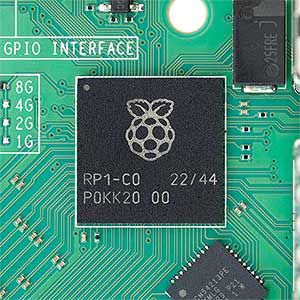

I/O management via the new Raspberry Pi "RP1" Southbridge
For the first time, this is a full-size Raspberry Pi computer using silicon manufactured in-house by Raspberry Pi. The RP1 "southbridge" provides the bulk of the Raspberry Pi 5's I/O capabilities and brings a radical change in peripheral performance and functionality.
Aggregate USB bandwidth is more than doubled, resulting in faster transfer speeds to external UAS drives and other high-speed peripherals.
The two-way 1Gbps MIPI camera and display interfaces found on previous models have been replaced by a pair of four-way 1.5 Gbps MIPI transceivers, tripling total bandwidth and enabling up to two cameras or displays to be combined.
Maximum SD card performance is doubled, thanks to support for the SDR104 high-speed mode.
What's more, this platform features a single-lane PCI Express 2.0 interface, providing bandwidth and information access for future accessories.
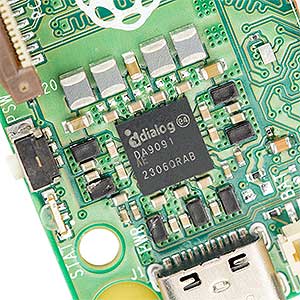

New power management functions
The Raspberry Pi 5 features a brand-new power management integrated circuit (PMIC) specially designed for the Rasberry Pi, the DA9091 "Gilmour" PMIC.
This new circuit integrates new functionalities :
- • Support for the new USB-PD PHY power supply standard
- • RTC real-time clock with battery backup (optional)
- • A dedicated power button on the edge of the board
Technical specifications
- • 64-bit, quad-core Arm Cortex-A76 CPU running at 2.4 GHz, with
- • 512 KB L2 cache and 2 MB shared L3 cache
- • VideoCore VII GPU
- • LPDDR4X-4267 SDRAM 4GB
- • Wi-Fi 802.11ac at 2.4 GHz and 5.0 GHz
- • Bluetooth 5.0 / Bluetooth Low Energy (BLE)
- • Micro SD card slot, with support for high-speed SDR104 mode
- • 2 × USB 3.0 ports, supporting simultaneous operation at 5 Gbps
- • 2 × USB 2.0 ports
- • Gigabit Ethernet, with PoE+ support (requires PoE+ HAT)
- • 2 × 4-channel MIPI transceivers for cameras/displays
- • PCIe 2.0 x1 interface for fast peripherals
- • DC 5V/5A power supply (PD enabled)
- • Raspberry Pi standard 40-pin header
- • Real-time clock (RTC), powered by external battery
- • Integrated power button
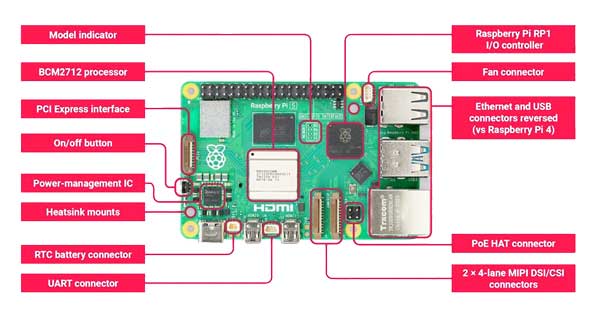

Warnings Cooling system
For optimum use of your Raspberry Pi 5 board, be sure to use an efficient cooling system such as the one integrated in the new case or the Raspberry Pi active heatsink. Otherwise, CPU performance will be degraded in order to preserve processor integrity.
Raspberry Pi 4 - Pi 5 comparison
| Raspberry Pi 4 | Raspberry Pi 5 | |
| Architecture (bits) | 64 | 64 |
| SoC | Broadcom BCM2711 | Broadcom BCM2712 |
| CPU | 1.5GHz quad-core ARM Cortex-A72 | 2.4GHz quad-core ARM Cortex-A76 |
| GPU | VideoCore VI - 500 MHz OpenGL ES 3.0 |
VideoCore VII - 800 MHz OpenGL ES 3.1, Vulkan 1.2 |
| RAM | 1 Gb / 2 Gb / 4 Gb / 8 Gb | 2 Gb / 4 Gb / 8 Gb |
| Connectivity | • 2.4 GHz and 5.0 GHz 802.11 ac wireless • Bluetooth 5.0, BLE • Gigabit Ethernet • 2 USB 3.0 ports (up to 5Gbps) • 2 USB 2.0 ports • Standard 40-pin GPIO • 2 Micro HDMI ports (up to 4Kp60) • 2-lane MIPI DSI, 2-lane MIPI CSI • Stereo audio and composite video ports (4-pole) |
• 2.4 GHz and 5.0 GHz wireless 802.11 ac • Bluetooth 5.0, BLE • Gigabit Ethernet • 2 USB 3.0 ports (5Gbps simultaneous) • 2 USB 2.0 ports • Standard 40-pin GPIO • 2 Micro HDMI ports (up to 4Kp60) • 2 x 4 MIPI lane (DSI/CSI) • PCIe 2.0 interface |
| Storage | Micro-SD | Micro-SD (high transfer speed - SDR104 mode) |
| RTC | N/A | RTC battery connector |
| Power supply | 5V/ 3A (via USB-C or GPIO connector) |
5V/ 5A (Power Delivery enabled) |
| PoE | Via a separate PoE HAT | Via separate PoE HAT (new version) |
| Power on | Instant after power-up | ON/OFF button |
Physical specifications
• Dimensions: 9.4 x 2.4 x 6.2 cm
• Weight: 46g
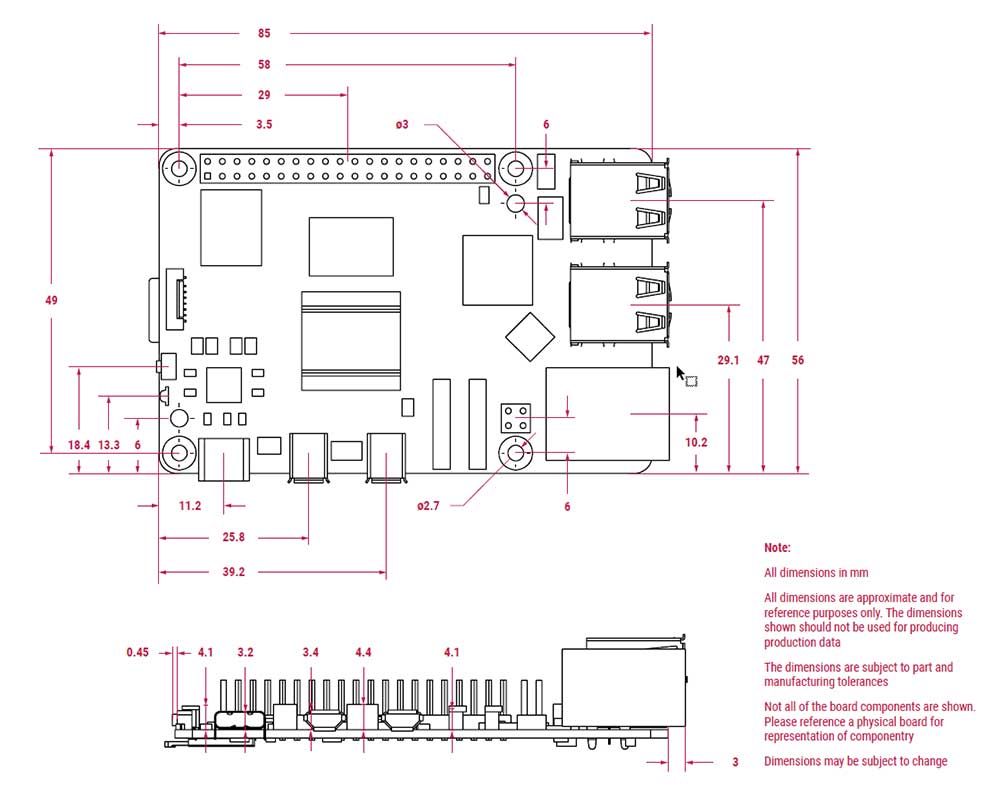

| SKU | RPIBV5-2G |
|---|---|
| Country of Manufacture | Royaume-Uni |
| Manufacturer | Raspberry Pi |

 Yadom Francais
Yadom Francais